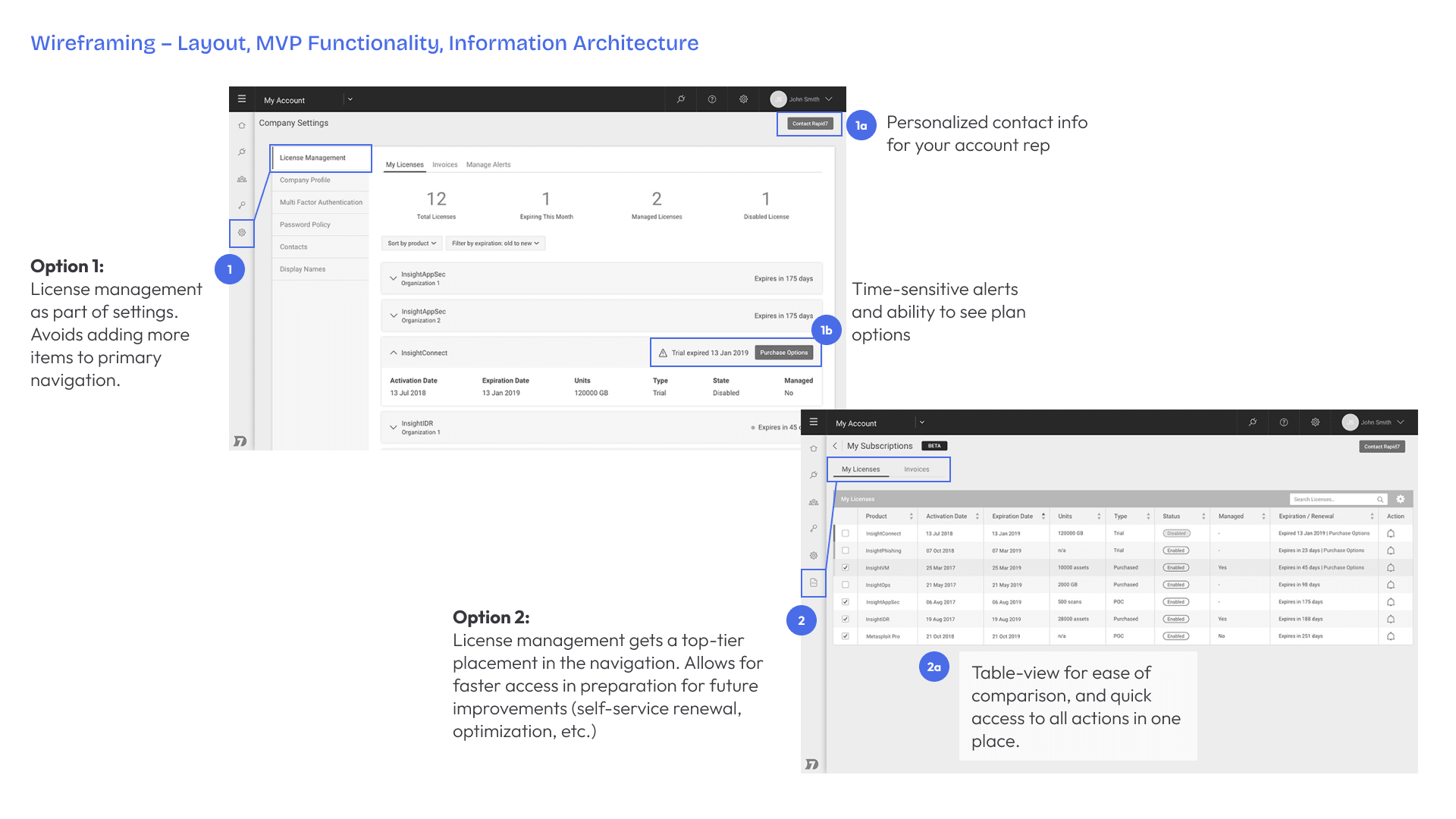
Project Goals
Rapid7's platform and product suite lacked direct license management, requiring customers to rely on manual support to access critical plan, usage, and renewal information. This led to frequent frustration as users were bounced between representatives, repeating their inquiries without a clear resolution. To address this, the project aimed to create a centralized, user-friendly licensing solution that empowered customers with self-service access to their license details, reducing reliance on support teams and improving overall user experience.
Problem
Solution
My Process
- Research everything: Including cybersecurity, SaaS subscription best practices, and competitor examples. I consulted with other designers within my organization to understand how and why previous decisions were made in the platform and to gain context about the short- and long-term product road-maps.
- Cross-functional conversations: Working with UX researchers, product managers, engineers, support teams, sales, and account executives.
- Ideate and wireframe: Start with sketching, then move to wireframes, making sure to consider user flows and information architecture.
- Gather feedback: Rounds of design review with stakeholders to ensure requirements and needs were met.
- Content planning: I worked with the UX writing team to review content and gather early input on terminology.
Research & Analytics
I conducted exploratory research and facilitated user interviews alongside a UX researcher to gain insight into the problem and user expectations.
- Competitor analysis of licensing management and cybersecurity platforms.
- Moderated, structured user interviews with mocks.
- Informal, unstructured interviews with internal stakeholders such as customer success.
- Analysis of client behavior on the existing site using web analytics tools (Domo, Pendo).
Core Principles
Automation and reduced work
- Remove the burden of manual work when monitoring and maintaining many licenses
- Automate functions like removing duplicate assets, flagging ghosts and stale assets, and more
Clarity and ease of use
- Provide relevant help and tips
- Informative and functional
- Quick access to contact help
Personalization
- Show information and options that are meaningful to the user
- Allow users to customize expiration alerts to match their company's purchasing and renewal timelines
- Ability to have usage rules and custom caps
Visibility and easy access
- Platform and product level information availability
- Compliance is the primary user concern
Project Execution
First I sketched some primary ideas based off of my own knowledge and research. Then I refined the sketches into three versions of wireframes, with updates based on the existing back-end licensing capabilities in Saleseforce. After research and constraints determined that some functionality would not be immediately needed, I removed licensing usage features. I worked with cross functional stakeholders to review and validate the designs. Finally, I shared the work with other areas of the business (e.g. support, sales, customer success, etc.) that would be impacted by this new feature.
While the MVP was being implemented by our engineering team, I started envisioning the long-term future state of licensing design for Rapid7. While exploratory, I wanted to make sure that my current and future designs would be flexible enough to accommodate growth and new features.
Result
As a result of this design, we found that we could reduce reliance on account representatives and customer success managers by automating license management, and decrease ticket volume to the support team, freeing them up to work on other problems.








